What’s It Like to Ride the Great American Rail-Trail? Just Ask These Trail Trekkers.
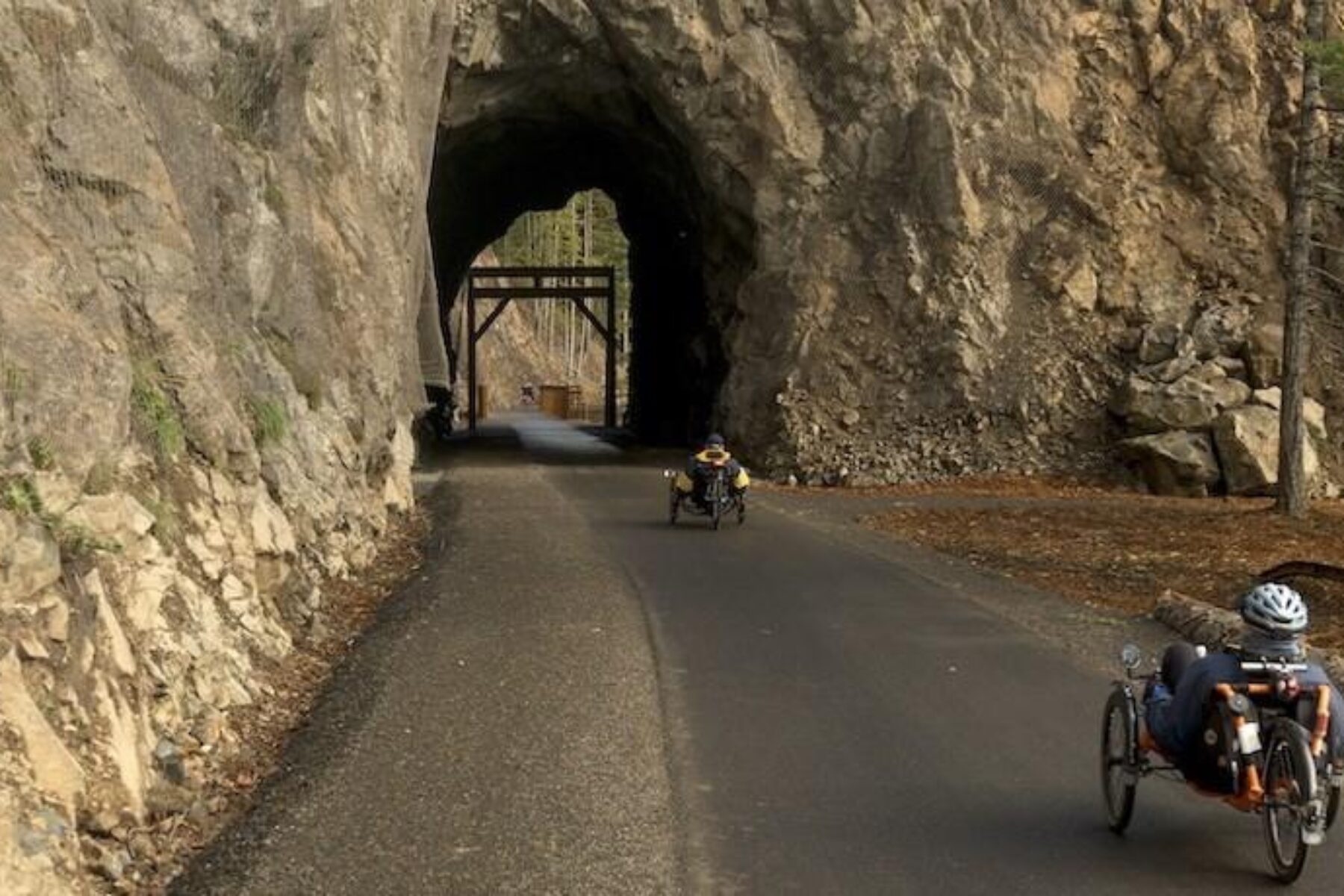
Soon after Rails-to-Trails Conservancy (RTC) and partners announced the preferred route of the Great American Rail-Trail™ at a live broadcast on May 8, 2019, some trail fans started planning and mapping. Others barely took time to throw on a pair of sneakers or inflate their tires before they hopped on it. Whether they’re setting out to cross it in stages, or embarking on one epic journey, the trail has already called quite a few names.
To commemorate the anniversary of the launch of the Great American, RTC talked to several long-distance bicyclists who have taken on the trail already—or are about to—to learn about their experiences so far, and why they’re tackling it the way they are.
While the individuals interviewed are taking different approaches to completing the Great American, they each described a sense of discovery that fuels many long-distance riders, no matter how they set out to ride it. “Regardless of the circumstances, there’s always this story of self-empowerment, and of personal transformation—people building confidence in their ability to power themselves,” said Saara Snow, travel initiatives coordinator for the Adventure Cycling Association (ACA).
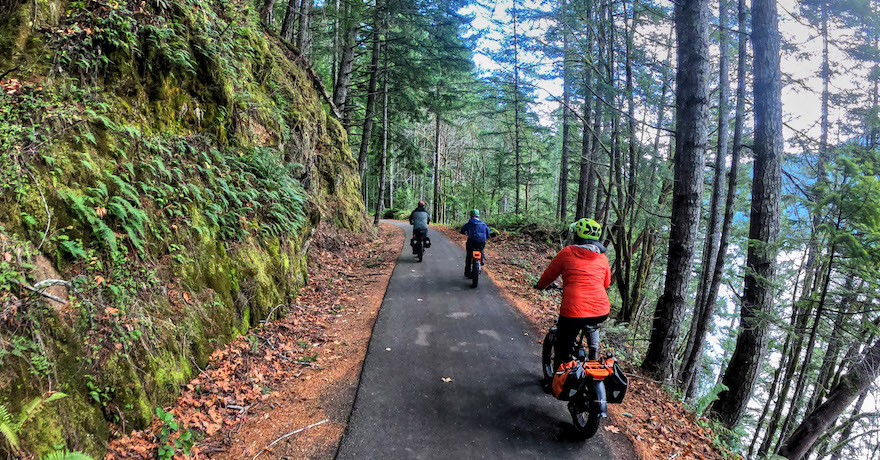
The ACA leads dozens of guided tours of varying distances across parts of the United States, including portions of the Great American, like the C&O Canal Towpath in Washington, D.C., and Maryland, or the Olympic Discovery Trail in Washington State. The level of support on the trips varies from self-contained to guaranteed lodging, but one thing most of them have in common is that there’s a waiting list to join. The allure of what people can discover across the country, and within themselves, has kept the ACA rolling for 45 years, Snow said.
“You could easily rent a car or RV or something way more comfortable and see the country that way, but it’s kind of a barrier,” she said. “You’re not really fully absorbing the landscape and the people and the culture the way that you do on a bike.”
All in One Go
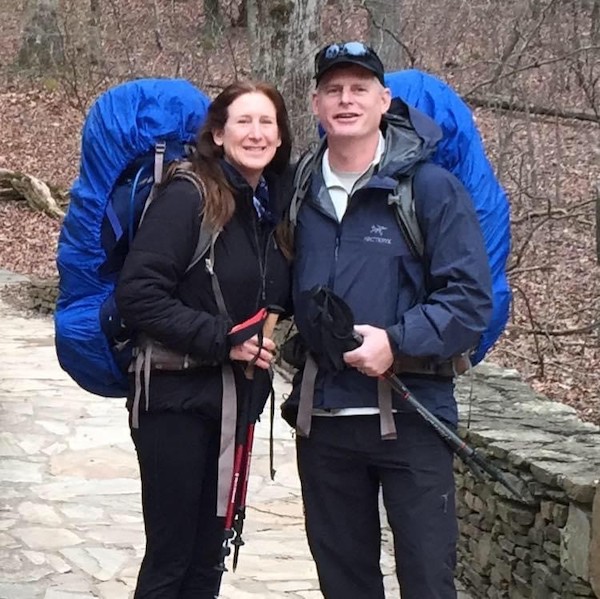
This summer, Warrior Expeditions participants Allison and Alan Garrigus are serving as early explorers of sorts. They’re tackling the Great American Rail-Trail with the nonprofit that believes in the restorative properties of long-distance outdoor therapies for people who are transitioning back from wartime experiences. Along with three other veterans, the couple is biking across the country along the route of the Great American, which formally turns two on May 8, 2021.
For the couple, this is the second expedition that they have joined, which is one more journey than usual for Warrior Expeditions participants. But the nonprofit tends to lean on experienced participants when a new path is being forged, and this will be the first Warrior Bike expedition across the 12-states-plus-D.C. 3,700-mile route. Along with a group of returning soldiers, the couple hiked the Appalachian Trail in 2019. That was a dream of Allison’s for decades. (When they got married about eight years ago, the couple wore hiking boots to the reception.) So this year, they get to fulfill Alan’s dream trip. He’s wanted to bike across the country since he graduated high school.
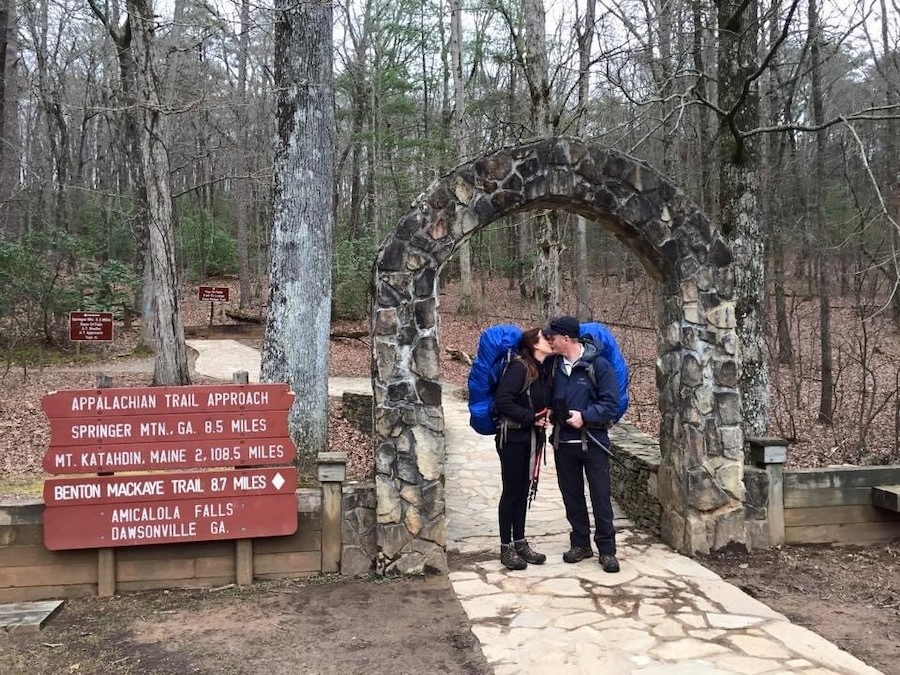
“Oh, the freedom, the freedom,” he said when asked why. “You’re on a self-contained vehicle that you’re powering. And, kind of like Alice’s (dream), the freedom, the variance of exploring. We get to do that now. It’s going to be great.”
The Warrior Expeditions group plans to start at the National Mall and continue together on the route until Cumberland, Maryland. Then, Allison said, there will be some leeway. If someone wants to ride ahead a day or two, or take it easy and fall behind, it’s totally fine. The goal is to complete the trail in a three- to four-month window.
“My husband and I, our goal is to really just take our time and kind of enjoy it, not go crazy with the mileage,” she said. “We’re looking to [have fun], not to get saddle sores or injuries or things along that line.”
She said she has coordinated support for the group in cities and towns across the trail’s path, all the way to LaPush, Washington. In her 21-year Navy career, Garrigus worked as a nurse. After retiring in 2009, she continued her career as a contract worker for the Naval Center for Combat and Operational Stress Control, where the staff studied post-traumatic stress resiliency and treatments for PTSD. While she said she has not experienced combat-related PTSD, she wanted to assist others who have. And, like the Warrior Expeditions team does, she believes that long journeys like the Great American Rail-Trail ride can help.
“I think it’s just a great idea, and it’s long enough so people can work on their mental health,” said Garrigus. “My background, I have a master’s in community health and behavior modification. Any behavior modification, it takes 12 weeks, they say, by research, to change behavior. I think this trail, for those who are working out some issues, gives you enough time.”
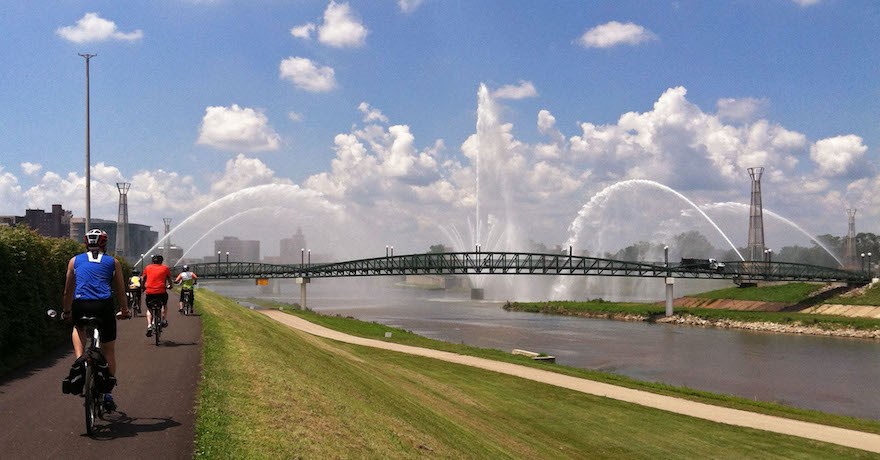
“One thing I love about the Great Allegheny Passage (gaptrail.org)/C&O Canal Towpath [host trails for the Great American] is the abundance of campsites (free and paid), making it more possible to chunk out the trip in whatever time frame a person needs. With lots of potable water along the trail (plus nearly always being near a filterable water source), convenient access to a variety of shops and such, it’s a good starter bikepacking trip. Its start and end points, being in major cities, are also great for finding amenities (and people and resources), AND it makes the trail busy enough to feel safe traveling solo.”
—Kitaira Stotler, Pittsburgh, Pennsylvania
Taking the Trail in Over Several Summers
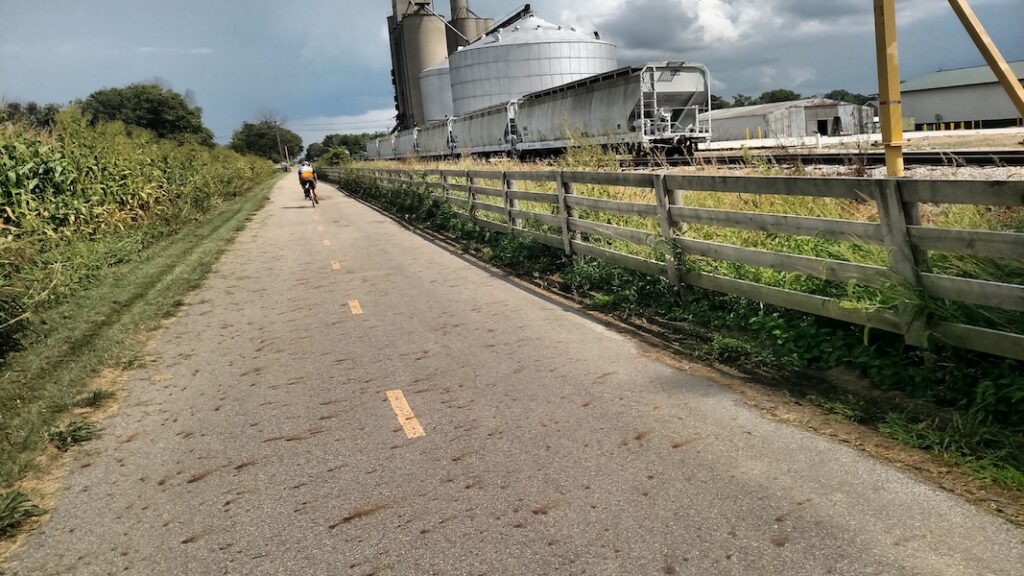
When Ohioan Keith Workman first learned about the Great American Rail-Trail project, he examined the route and realized he’d covered quite a bit of ground on the eastern portion of it.
“I realized, well, I’ve already ridden everything from Washington, D.C., to northwestern Indiana,” he said. “Why wouldn’t I start and ride west from there?”
So last August, with his wife, Carol, providing vehicle support, he headed west from Crown Point, Indiana.
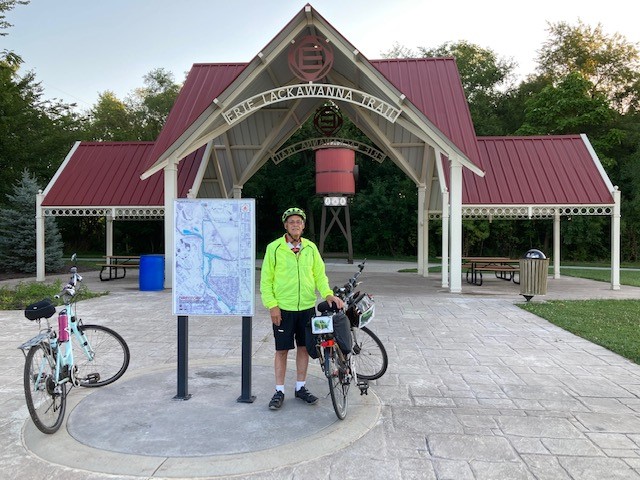
“It was a beautiful, cool morning when we arrived at the Erie Lackawanna Trailhead and it is gorgeous!” Workman, the founding member of Rails-to-Trails of Wayne County, Ohio, wrote in a daily journal at the outset of an 18-day, 786-mile trip. “We were fortunate to find five parking spots together so we could park the truck and camper. Carol wanted to ride a little, so she rode 2 miles out with me before returning.”
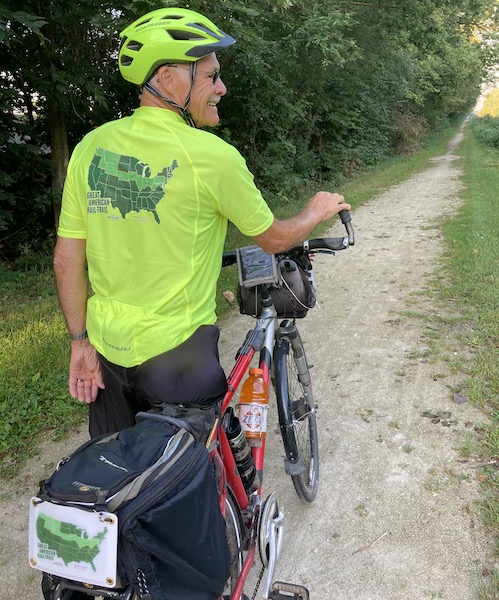
Their 2021 leg of his Great American Rail-Trail journey took him from Crown Point to Chadron, Nebraska. He took photos and provided trail condition reports along the way. Workman said he appreciates the solitude of distance riding, and he’s put in miles with his wife and small groups too, including on fundraising tours he’s led. He also appreciates railroad history, and history in general, and those affinities are reflected in photos of plaques and unique trail engineering he posted to his travelogue on the Rails-to-Trails of Wayne County website. He also likes to recommend unheralded points of interest. If you ever ride through Newport, Nebraska, he said over the phone, you have to stop at the Newport Pool Hall, which features an honor system snack bar.
“It’s one of those little gems that you ought to take the time to look at it, you know,” he said.
This summer, he plans to ride the remaining portions of the trail that cross Wyoming, Montana, Idaho and Washington. While he enjoys cycling on protected paths, Workman doesn’t like riding on shared roads for long stretches—“I can see it from the truck just fine,” he said. He hopes that, as more gaps in the trail get filled, that the cross-country protected passageway will grow the long-distance cycling community. Now about 53% complete, Workman said he wanted to get out on the GRT and see what he could now.
“Because I’m not gonna live long enough to see the whole trail opened,” Workman said on May 2, 2021. “I’ll be 79 in less than a week. And I’m blessed with exceptionally good health, and I’m riding what I can while I can.”
View Keith Workman’s Great American travelogue on the Rails-to-Trails of Wayne County, Ohio, website.
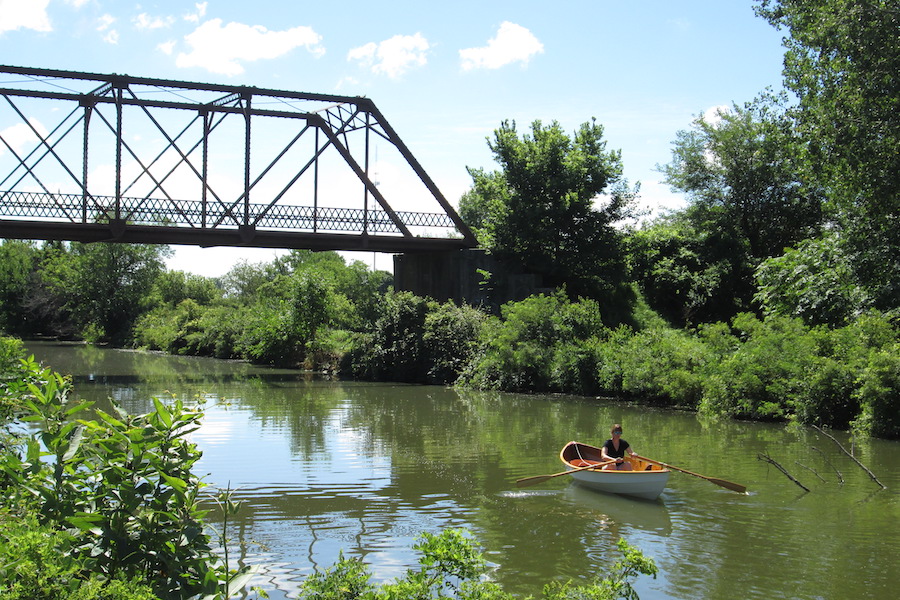
“The Old Yellowstone Trail was nice! We just drove out from Missoula for an afternoon ride and picnic … rode about 10 miles out-and-back. It parallels and crosses the Clark Fork River a few times, so lots of bird-watching opportunities. We saw bald eagles, osprey, hawks, western meadowlarks, red-wing blackbirds, and lots of ducks and geese. We also passed a ranch that had about a dozen longhorn bulls right by the trail that were HUGE! There aren’t … specific “points of interest” on the Old Yellowstone Trail itself, just lots of wildlife and great views of Big Sky Country. The small town of Deer Lodge is nearby (which the Old Yellowstone Trail is planned to be extended to), and it is worth checking out [for] the Old Montana Prison Museum, the Montana Auto Museum and the Grant-Kohrs Ranch National Historic Site.”
—Amy Wally, GIS Specialist/Cartographer, Adventure Cycling
The Ala Carte Menu
Like Allison Garrigus, Ryan Gardill wanted to hike the Appalachian Trail, and the 30-year-old Lancaster, Pennsylvania, firefighter and former Marine planned to do it in sections about a decade ago. But time and body aches got in the way. The dream of completing a cross-country journey never went away. At a Manheim Township Fire Rescue station, a conversation with a coworker relit the spark.
“One of my partners at work, Tyler Fleming, he told me about this trail from Pittsburgh to D.C. and said, ‘Do you want to go on a bike ride?’” Gardill said. “And that to me was the best thing ever, because I got to go on a cross-country ride, still [with a] backpack, still carry everything with you, still doing all this stuff, but you get to cover so much more ground …. It was really awesome to even know that these trails exist. And to be able to see three states, four states in the span of a week, and meet all these people and see all these sites and learn all these stories from the other bikers, it sounded so cool. So I had to do it.”
Gardill and Fleming knocked out that easternmost leg of the Great American Rail-Trail with a few goals and rules for the 358-mile ride. They set out to pedal 60 miles a day and pre-planned their stops based on that mileage. If they saw something neat, they allowed for stops to take a picture. And if they happened to see a place where it was clear they could order pizza and/or a beer, they hit the brakes.
“If there is pizza, you stop,” he said.
Rules are rules.
In the near future, they plan to head west from Pittsburgh and see what’s out that way on the trail. As more segments of the Great American Rail-Trail connect and as more miles of trails are developed, Gardill said he and Fleming will plan trips to go bike them as well.
“We’re ready to knock it out,” he said, echoing a sentiment shared by everyone interviewed about their different paths across the Great American Rail-Trail.
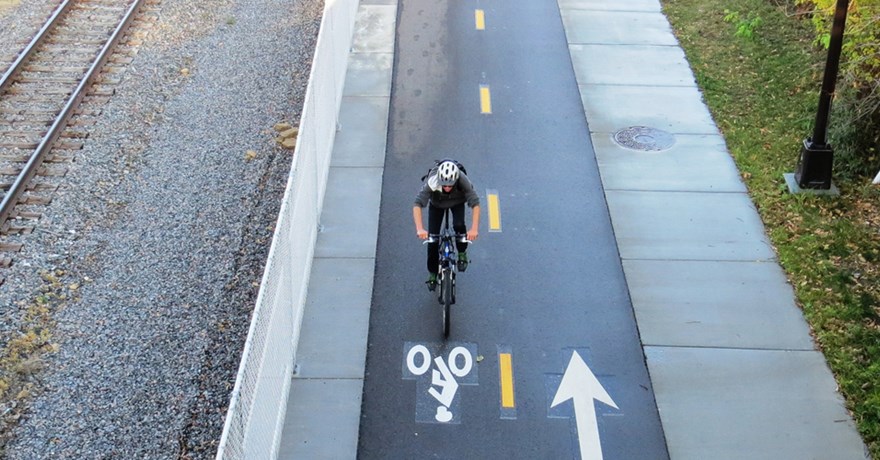
“My advice to anyone doing a long trip is to expect the unexpected, carry emergency cash and card, acquire a GPS communication device for remote areas, learn about where you are traveling, and most of all: It’s about the journey—not the destination.”
—Shequaya Bailey, Member, The Black Foxes; President, Pittsburgh Major Taylor Cycling Club

Donate
Everyone deserves access to safe ways to walk, bike, and be active outdoors.